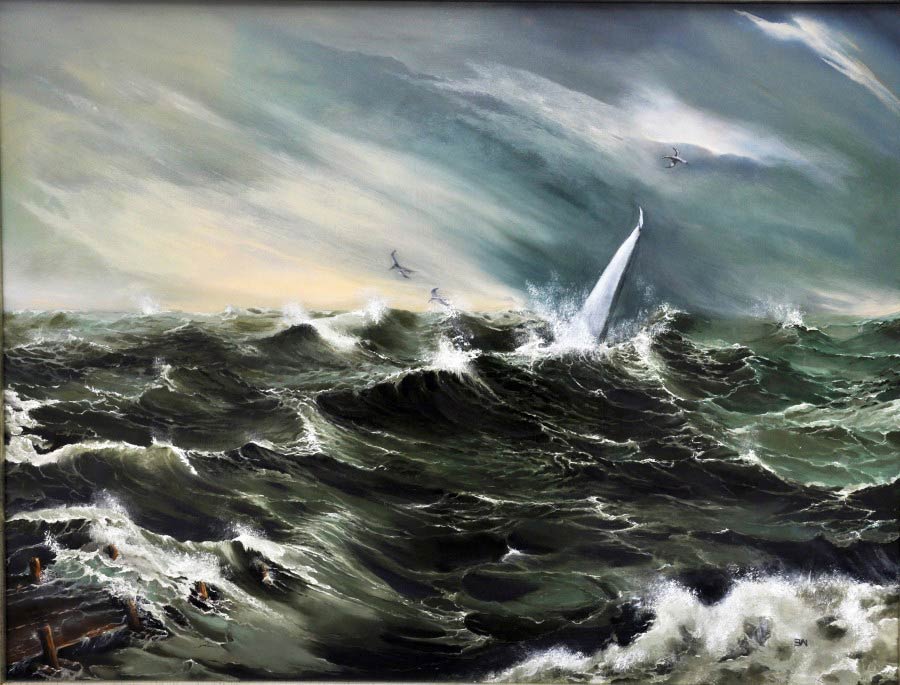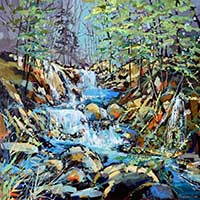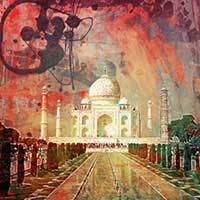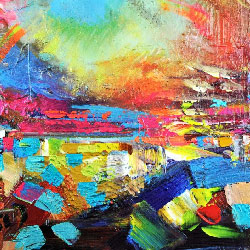In order to give you the best browsing experience our website uses cookies. By using our site, you are accepting our use of cookies. Please see our privacy policy.
A Guide to Seascape Artwork
Seascapes are a popular type of artwork, appreciated by art lovers of all ages. They come in a wide range of styles, taking on both contemporary and traditional forms.
A brief history of Seascapes
Paintings that depict the sea and coastal scenes are often referred to as seascapes or marine paintings. Artists have been painting seascapes for centuries, as there has always been a great demand for them.
They first became popular in the Romantic era and were classed as a form of marine art. Many artists at the time created seascapes as a way of depicting Britain’s maritime power in the 17th century and others created them as a way of documenting historic battles such as the Napoleonic Wars. It was much later that artists began to see the sea itself as the subject of their paintings, rather than the ships that powered over it. Landscape artists began to explore the sea and use it as their painting subject and later went on to make ‘seascapes’ a genre in it’s own right.
One of the most famous British seascape artists was Joseph Mallord William Turner (1775 – 1851). He was known as ‘the painter of light’ because of his use of brilliant and bright colours in his landscapes and seascapes. Many of his seascapes were created using watercolours and oils, though he also experimented with engraving too.
The Fighting Temeraire (1839) is one of his most famous paintings, which features a glowing sunset over a ghostly ship. Another famous painting is Rain, Steam and Speed (1844) a seascape that featured almost unrecognisable shapes and form. It is often referred to as an early form of impressionism and is believed to have influenced the impressionist movement thirty years later.

A Brave Sailor By Elizabeth Williams
Why are seascapes so popular?
Everyone has their own individual reasons for enjoying a piece of art, so whilst we would not like to speak for everyone, we think one of the reasons that seascapes are so popular is because of their calming and relaxing properties. Who doesn’t want to engage with a beautiful piece of artwork and be left feeling peaceful and serene?
Seascapes are particularly popular with both UK artists and art fans, which may be down to the fact we live on an island that is surrounded by the sea and beautiful coastlines.
Seascapes require skill and a keen eye
Although seascapes can look absolutely striking, particularly when the artist has taken care to portray the changing light and weather of the scene, it is not the easiest art form to master. Not only do the artists have to think about creating the texture of the sand and the reflections of light on the water, but they also have to study how the sea moves so they can capture it authentically.
Techniques used by seascape artists
Many artists that specialise in creating seascapes use oil paints, however pastels and acrylic paints are also popular choices, as well as watercolours and pencil. A wide range of techniques are used to create texture and depth, with some of our seascape artists including Laurence Chandler even using household items like kitchen roll and toothbrushes to perfect their paintings.

Move By Laurence Chandler
The sea is a fascinating subject for artists, as they have the opportunity to depict it along with the emotions it portrays in so many different ways, from stormy seas that conjure up feelings of power and fury, to calm waters that create feelings of romance and peace.
The unpredictability and energy of the sea has made for some striking pieces of artwork, many of which we are lucky enough to showcase here on the Art2Arts website. As we said before, British artists are particularly well acquainted with the sea, with many featuring it in their artwork as a way of celebrating our little island’s heritage.










